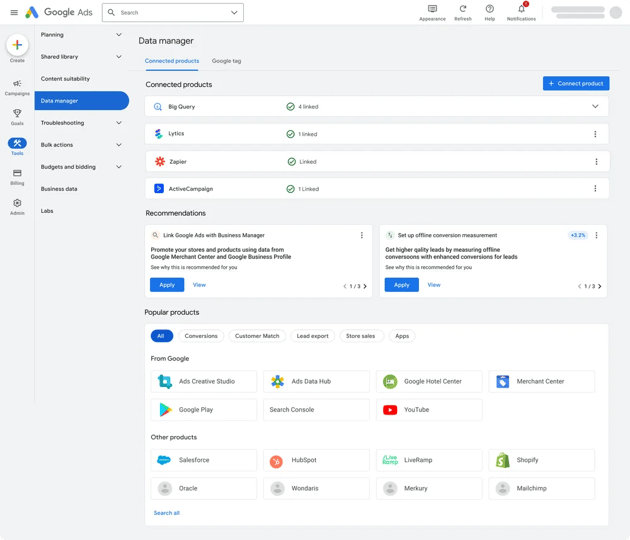AI Shopping Assistants: Will Small Retailers Get Lost in the Algorithm?
In the rapidly evolving landscape of e-commerce, AI-powered shopping assistants are emerging as potential game-changers. However, recent developments suggest these tools may face significant challenges in delivering on their promises—particularly for smaller retailers who risk being overshadowed in this new paradigm.
ChatGPT's Rocky Start in the Shopping Space
OpenAI recently launched a product recommendation feature for ChatGPT, positioning it as a challenger to Google Shopping but with a key difference: initially offering no ads or sponsored content. This move represents a significant step for OpenAI into the trillion-dollar shopping market, potentially opening new revenue streams beyond subscription services.
However, the implementation has already shown concerning flaws. When The Verge tested the new functionality, they discovered ChatGPT struggled with accuracy, particularly for products not yet released. In one example, ChatGPT incorrectly reported that Nintendo's online store had experienced "rapid sellouts" of the Nintendo Switch 2, even though the store hadn't even begun sales.
This issue highlights a fundamental challenge: AI shopping assistants can produce responses that sound authoritative but contain factual errors that could mislead consumers and harm businesses through incorrect representation of their products or availability.
Perplexity's Shopping Features: Unbiased or Unclear?
Not to be outdone, Perplexity has aggressively entered the AI shopping assistant space with features that go beyond ChatGPT's capabilities. Perplexity Shopping positions itself as offering "unbiased recommendations" powered by AI rather than sponsored content, presenting product information in "easy-to-read product cards."
Perplexity even offers a one-click checkout feature called "Buy with Pro" for their paid subscribers in the US, keeping users within their ecosystem rather than sending them to merchant websites. The feature works with select merchants, allowing users to purchase products directly through Perplexity without entering shipping and billing details multiple times across different sites.
However, there are concerning transparency issues. Fortune reported that even Perplexity's CEO doesn't fully understand how the recommendations are chosen by their AI system. This lack of clarity raises questions about potential algorithmic bias that could disadvantage smaller retailers who lack the data presence of larger competitors.
Google's Gemini Enters the Ring
Google's Gemini AI models are also being integrated into shopping experiences, leveraging Google's massive data resources. Google recently revamped its shopping platform with AI powered by Gemini models, using 45 billion product listings from Google's Shopping Graph to enhance the online shopping experience.
The platform offers AI-generated recommendations tailored to specific queries. For instance, searching for a "Men's winter jacket for Seattle" will yield climate-specific recommendations, with filters allowing users to refine results based on factors like size or availability.
Google also appears to be focusing on personalization. By analyzing past purchases, browsing history, and customer interactions, Gemini AI can make personalized product recommendations with "remarkable accuracy," potentially reducing acquisition costs and increasing revenue.
The Small Business Dilemma
As these tech giants battle for dominance in AI-powered shopping, smaller retailers face several significant challenges:
1. Algorithmic Invisibility
Without the data presence and technological resources of larger merchants, small businesses may find themselves effectively invisible in AI recommendation systems. If an AI assistant doesn't "know" about your products, it can't recommend them—regardless of quality or relevance.
2. Lack of Transparency
The "black box" nature of these AI recommendation systems means small businesses have little visibility into how recommendations are generated or what they need to do to improve their chances of being recommended. Without clear guidelines, they're left guessing at how to optimize for algorithms they can't see or understand.
3. Centralized Purchasing Experiences
Features like Perplexity's "Buy with Pro" keep customers within the AI platform's ecosystem. While Perplexity claims merchants still "own" their customers, the trend toward one-click purchasing within AI platforms could potentially distance businesses from direct customer relationships.
4. Cost Barriers
Participation in these ecosystems may eventually require financial investments. Perplexity has launched a "Merchant Program" for retailers to share product specs with them, ensuring their products are properly indexed and potentially recommended. While currently free, such programs could eventually become paid opportunities that disadvantage smaller players.
What Can Small Retailers Do?
Despite these challenges, there are potential strategies for smaller retailers:
Embrace Merchant Programs Early
Joining programs like Perplexity's Merchant Program while they're still free could help establish presence in these emerging ecosystems before potential cost barriers arise.
Focus on Unique Products and Niche Markets
AI shopping assistants may struggle most with specialized or niche products where training data is limited. Businesses offering unique goods may still find ways to stand out in these systems.
Prioritize First-Party Data Collection
Building direct customer relationships and collecting proprietary data may become even more critical as third-party AI systems increasingly mediate shopping experiences.
Monitor AI Recommendations Actively
Regularly testing how AI shopping assistants represent your products and competitors can provide valuable insights into potential algorithm biases or inaccuracies.
The Path Forward
The arrival of AI shopping assistants from major tech companies represents a significant shift in how consumers discover and purchase products online. While these tools promise convenience and personalization for shoppers, they raise serious questions about the future viability of smaller online retailers in an increasingly AI-mediated marketplace.
As these platforms continue to evolve, both consumers and retailers should demand greater transparency about how recommendations are generated and what factors influence product visibility. Without such clarity, we risk creating a digital shopping environment where visibility is determined not by product quality or relevance, but by algorithmic decisions that remain hidden from both businesses and consumers.
The coming months will prove critical as these platforms refine their approaches and establish the norms that may define e-commerce for years to come. For small businesses, staying informed and adaptable will be essential to navigating this rapidly changing landscape.


